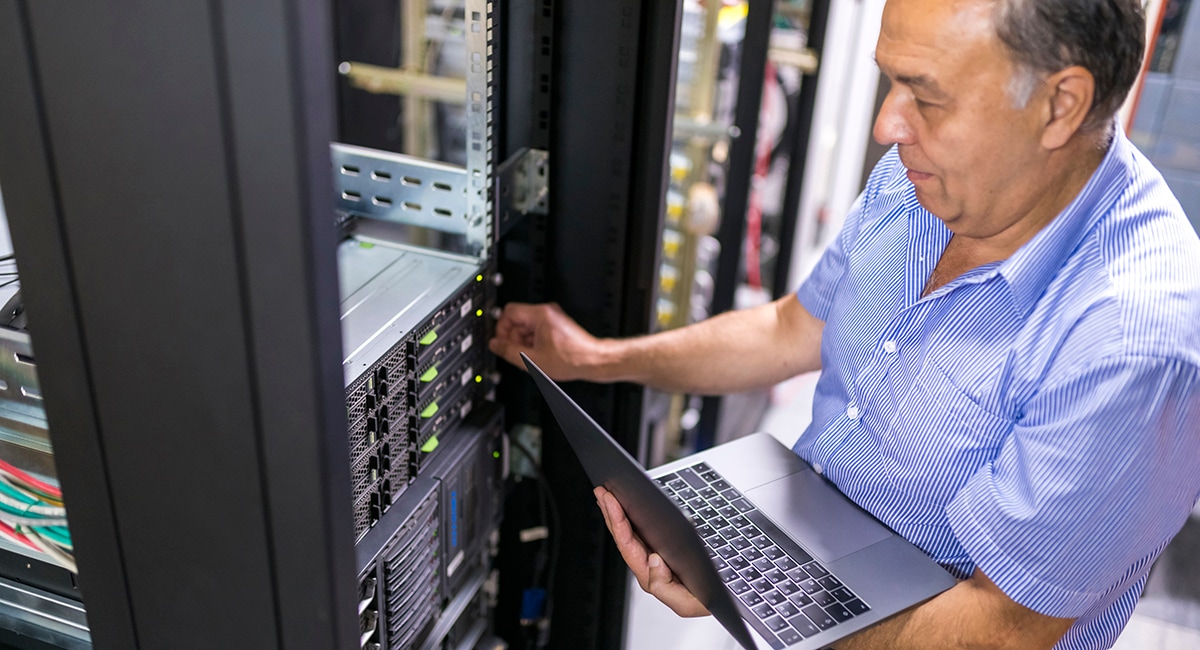July 22, 2019
Why Hardware (Still) Matters in the Data Center
For many organizations, data center modernization means investing in high-quality infrastructure.

Many of the discussions I hear about data center modernization involve massive enterprises that focus on efforts such as incorporating automation throughout their data centers, containerizing applications for cross-environment portability and moving to a more agile app development process.
Don’t get me wrong; all of these use cases are enormously valuable — for the right organizations. But for many of my customers, data center modernization means something different. These organizations are focused on getting the best possible performance, improving the efficiency of infrastructure management and shrinking their data centers’ footprints and utility bills — all without busting their IT budgets.
Many of these businesses have largely predictable workloads, and they wouldn’t see any cost benefit from moving to the public cloud. They simply want to shrink from three racks down to one, boost the performance of their applications and manage everything on their own, without having to bring in external consultants once a week.
For these organizations, data center hardware is still king.
Adding Value Through Server and Storage Upgrades
The end-of-support deadlines for Microsoft SQL Server 2008 and Windows Server 2008 are motivating many organizations to finally refresh their aging data center infrastructure. As they do so, it’s important that they deploy new equipment that will be cost-effective and provide a high level of performance for years to come.
For organizations that are making new investments in hardware, I offer two main pieces of advice: Opt for servers that support Optane memory and choose all-flash storage over spinning disks.
Optane memory is a system acceleration solution from Intel that improves server performance. While it’s relatively new, emerging applications are going to be written to leverage Optane memory, and organizations may find themselves needing to refresh their equipment sooner rather than later if they don’t plan ahead.
Flash storage provides a significant performance boost over spinning disks. That’s no secret, but I still see many organizations purchasing slower hard disk drives (HDDs) instead of flash. The reason: HDDs are less expensive. What these organizations likely don’t realize is that modern data deduplication and compression techniques allow them to deploy flash storage for around the same cost as spinning disks. Given the dramatic performance boost, the decision between flash and HDDs should be something of a no-brainer.
Achieving Your Own Version of Digital Transformation
With terms such as “digital transformation” dominating discussions about IT, it can sometimes seem like a company doesn’t matter unless it’s aiming to be the next Uber or Netflix. I won’t pretend that top-shelf servers or flash storage are going to upend entire industries all on their own. But I can say that I’ve seen firsthand how infrastructure upgrades can deliver transformative benefits to individual organizations.
For example, one of my clients in higher education was using HDDs in its data center, creating such a severe storage bottleneck that students had to register for classes in assigned slots to prevent the registration system from crashing. The registration process ate up an entire week each semester, and classes were often filled by the time many students’ slots came up.
We went in and replaced the university’s spinning disks with an all-flash array. Within a single semester, all students were able to register simultaneously. This meant that students were able to adjust their plans on the fly when popular classes began to fill, rather than having to go back and forth with their advisers to work on a class schedule.
The university’s CIO told me the move was the most cost-effective infrastructure upgrade the school had ever undertaken, that students raved about the improvement and that it probably “made” his career at the institution. But more important, he told me that more students would now be able to graduate on time, since they’d be able to get into the classes they need for their degrees.
That might not meet the standard definition of digital transformation, and some people might not even consider it an example of data center modernization. But for a student who’s saving thousands of dollars in tuition and starting a career six months earlier than might otherwise be possible, the terminology isn’t as important as the results.
This blog post brought to you by:

